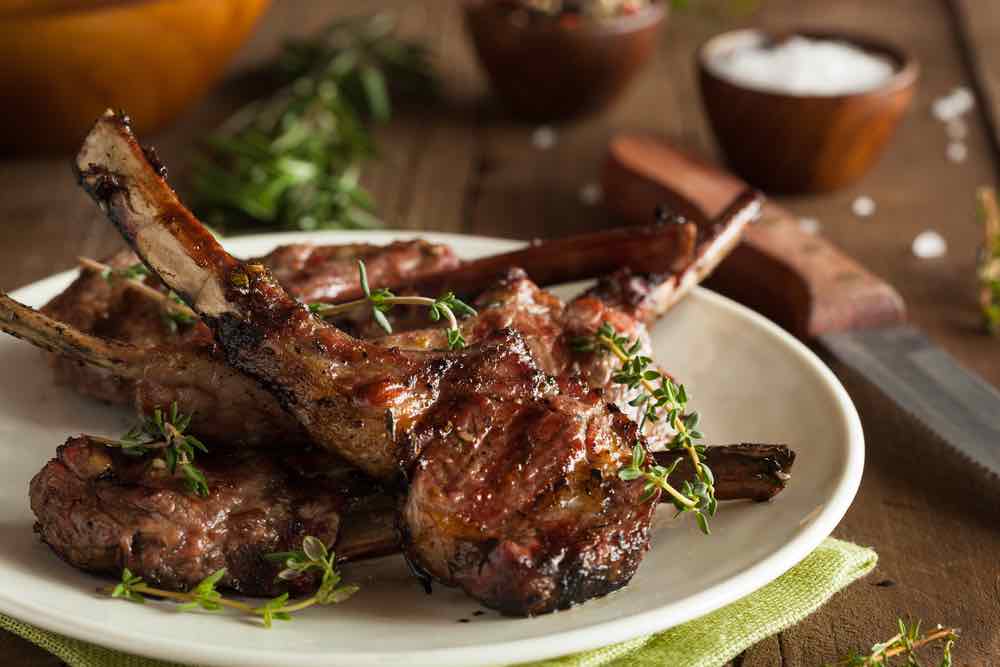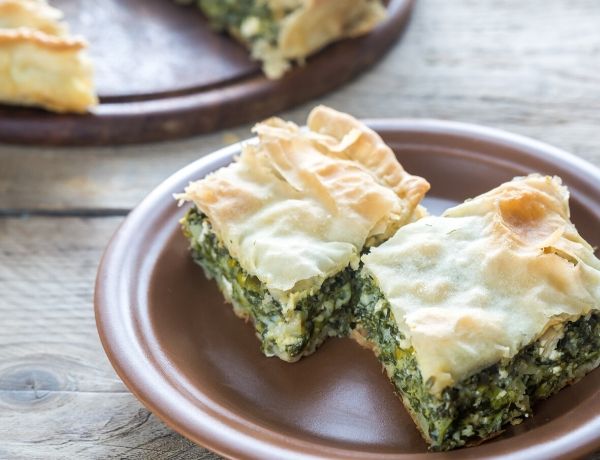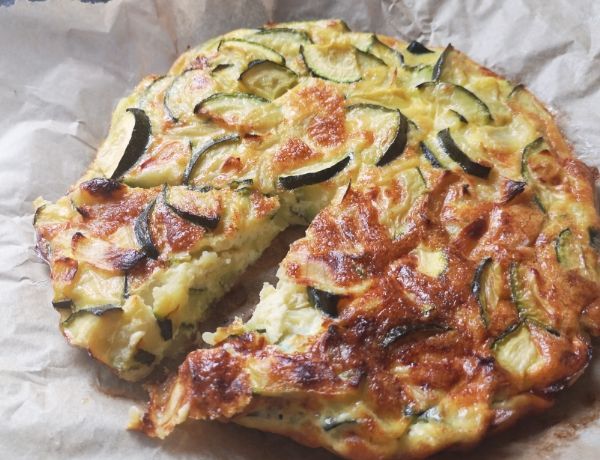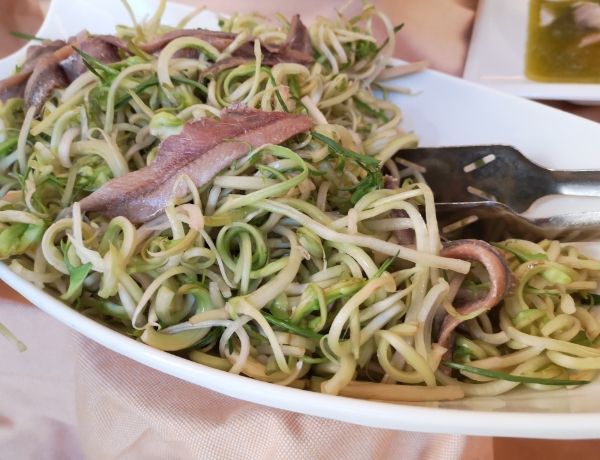Rome Easter food: Easter specialties from the Eternal City.
If you are lucky enough to spend Easter in Rome, you should make sure you make the most of this time to taste some of Rome’s traditional Easter foods.
The city of the Pope celebrates Easter with feasts fit for the occasions and Romans love to dig into Easter specialties both at home and at restaurants.

Unlike Christmas in Rome, which is mostly a family festivity celebrated in private houses, Easter sees many restaurants offering banquets, buffets and multicourse meals, usually including, in some form of the other, the most typical form of get together this time of the year: la grigliata (=BBQ, or grill)!
If you find yourself in the city at Easter or if you want to bring a taste of Rome to your Easter table, wherever you are, these are the best Rome Easter food!
Love food? Then do not forget to also check out our guide to Rome for foodies!
Rome Easter food traditions are recipe ideas

Uova sode- hard boiled eggs
Eggs are maybe the most iconig of all Easter foods and not only in their chocolate form.
In Rome at Easter, the eggs are also eaten hard boiled and usually for breakfast, something not usually done in Rome where breakfast tends to be a non-cooked, simple affair.
Traditionally, the eggs you eat on this day would have been blessed by a priest on Easter Saturday and would take the name of uova benedette (blessed eggs).
However, nowadays eggs feature on the Easter breakfast tables also of non-religious households.
My aunt used to serve them decorated with a leaf of an olive tree, taken from the olive branch from Palm Sunday, a presentation that is at the same time super simple yet effective.
Corallina – salami
Another classic from Rome is opening Easter lunch serving corallina.
Corallina is a type of salami and while it is originally from Umbria, it is much loved in Rome and typical of this day: it is simply served on a wooden table with a sharp knife for each person to carve out a slice (or two, or three!)

Torta pasqualina – Easter cake
The name torta is deceiving in this case as this is a savory dish, somewhat reminiscent of a pie.
Easter cake in Rome is two layers of puff pastry filled with spinach, ricotta and an egg and is usually served as a starter or a side dish.
It is a popular Rome Easter foods in many households as it is easy to make and keeps well: you will find it on easter tables but, even more commonly, in Easter Monday pic-nice baskets. It is the ultimate Easter Monday getaway food!

To make Porta pasqualina at home, you will need:
Puff pastry (totally ok to buy it frozen!)
- Ricotta
- Spinach
- Nutmeg
- Parmesan
- Egg
- Salt
Frittata
Frittata is a simple dish served in Rome all year but especially at Easter, when it is served as a starter.
Frittata, in its simplest form, is made of eggs, beaten and pan-fried (find my plain frittata recipe here), but the type you have at Easter and most commonly in Rome also has some vegetables in, usually artichokes or zucchini, like in the photo.
Frittata di Zucchine is simple to make at is easy to replicate at home. For the best result, prepare it the day before nd offer cold, when the flavory truly comes out!
To make frittata di zucchine at home, you will need:
- Eggs
- Onion
- Zucchini
- Olive oil
- Salt
- Pepper

Cacio e pepe (pasta)
Pasta dishes are among the most distinctive of Rome cuisine (carbonara being only the most famous) and many of them are traditional at Easter.
One of the most traditional of all is the deceptively simple cacio e pepe, a dish made with only a few ingredients but that, if done properly, packs a punch in terms of flavor and can easily stay as one of the best foody experiences in Rome of all!
I highly recommend you try this in Rome, to taste it in the full expression of its taste, however, you can also give it a shot at home. Be pernickety with the ingredients though, this is a dosh that simply cannot take substitutions.
For cacio e pepe at home, you will need:
- Spaghetti or similar (ideally bronze cut, the coarser variety)
- Pecorino Romano, medium
- Black peppercorns
- Salt (for the pasta water)
Find my recipe for cacio e pepe here.

Abbacchio scottadito – Roman style lamb cutlets
Easter wouldn’t be Easter without lamb and, in Rome, lamb is called abbacchio and usually served grilled and super hot!
The full name for this Rome Easter specialty is ‘Abbacchio scottadito‘ which literally translates into ‘lamb that burns your finger’.
This name give away the popular origins of this dish, eaten with your fingers, but also the most distinctive characteristics of it: the fact that you eat it very hot, straight from the grill.

To make Rome style lamb cutlets at home, you need:
- Good quality lamb cutlets
- Rosemary
- Salt
- Pepper
- A super hot grill and meat tongs!
You can find my recipe for lamb scottadito here
Puntarelle alla Romana – Rome style puntarelle (chicory)
A typical side dish from Rome and one that goes well with Easter food, if in season, is puntarelle all romana, a typical salad from the Rome / Lazio / Campania region.
Puntarelle (lit. small points or heads) are the sprouts of chicory and they make a lovely crunchy refreshing salad. In Rome, they are usually served with anchovies, either made into a paste or added in the form of small fillets.

Easter desserts
Rome cuisine is not particularly strong on dessert, (with the notable exception of the torta ricotta e visciole, a type of cherry) so the Easter desserts you try in Rome tend to be the same you find in other parts of Italy.
Two of the most traditional are Colomba, which is a short of easter panettone, a cake you buy rather than one you make, and the pastiera Napoletana, maybe the most traditional of all easter dessert and one that comes, as the name suggests, from Naples.
Children, however, will disagree with both these traditions and will claim that the most typical dessert in Rome at Easter is Easter eggs! Indeed, they are a tradition in Italy, in two versions: just chocolate (dark, milk, white – the choice is endless) or in the form of sugar-coated chocolate eggs, usually in pastel colors.
I hope you enjoyed this overview of the most common Rome Easter foods and has inspired you to taste them and who knows, maybe even try to make them at home. Happy Easter!
